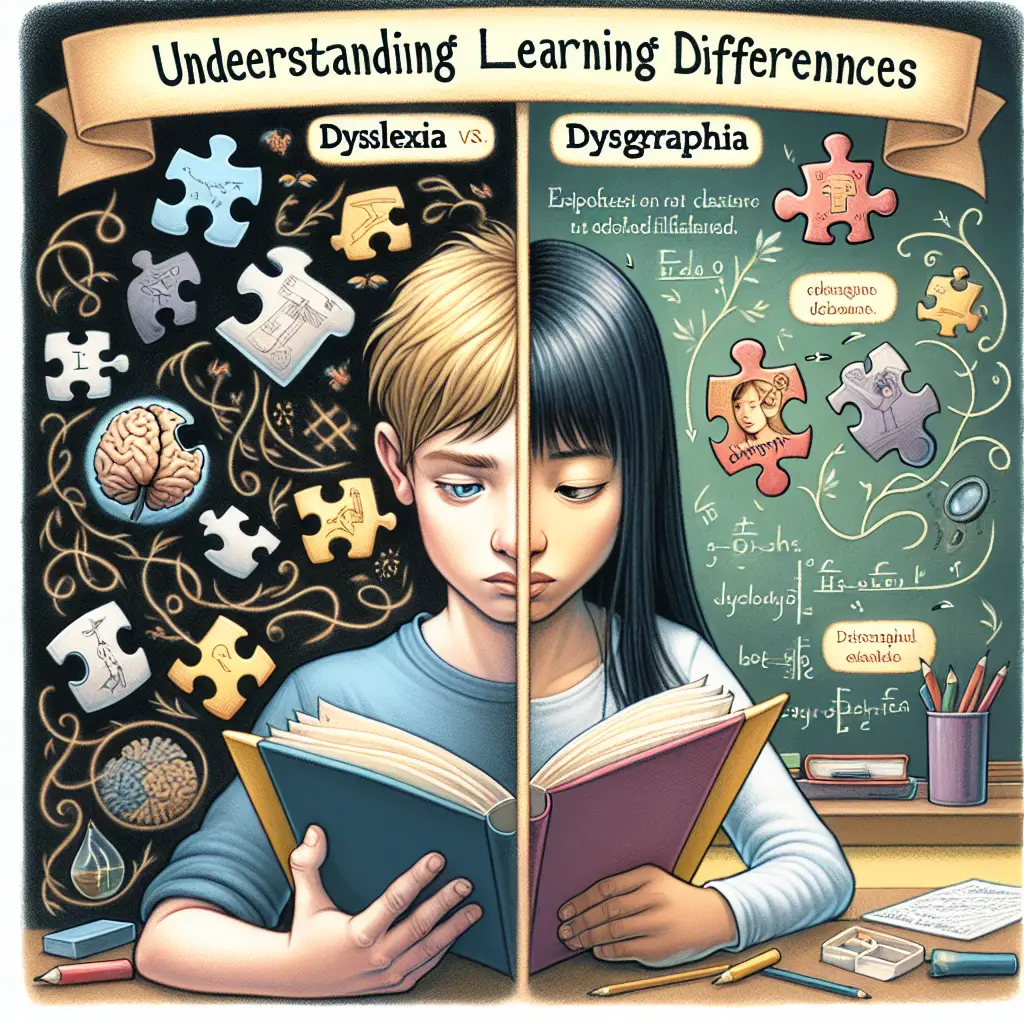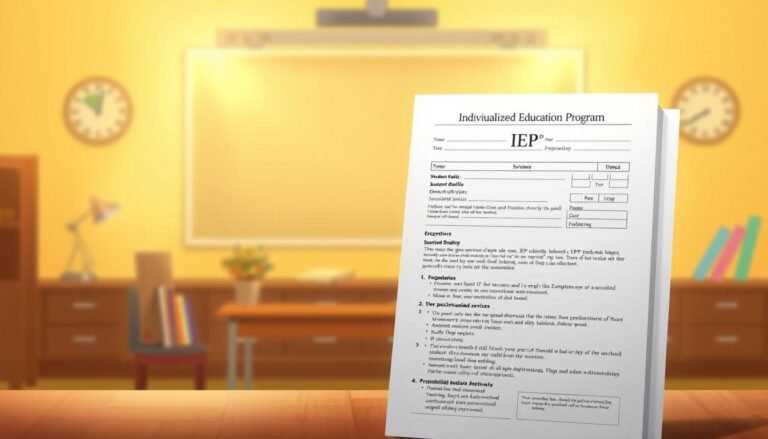
Understanding Learning Differences: Dyslexia vs. Dysgraphia Explained – The Essential Guide
In a world that thrives on information and communication, understanding the nuances of learning differences is paramount. With approximately 1 in 5 individuals diagnosed with a specific learning disability, awareness and education about conditions such as dyslexia and dysgraphia are crucial not only for educators and parents but for society as a whole. This article dives deep into Understanding Learning Differences: Dyslexia vs. Dysgraphia Explained, revealing insights that can change perceptions, improve lives, and foster inclusivity.
Introduction: The Power of Awareness
Imagine a child who loves stories but struggles to read them; another child deftly crafts narratives in their mind but finds it challenging to express them in writing. This illustrates the essence of our topic—two distinct yet often overlapping learning differences: dyslexia and dysgraphia. Understanding these differences is essential for unlocking potential and fostering an environment that nurtures all forms of intelligence and creativity.
This guide will illuminate the characteristics, challenges, and strategies associated with dyslexia and dysgraphia, aiming to empower individuals with knowledge and compassion. By the end, you will have an enriched perspective on these learning differences and ways to support those affected by them.
Dyslexia: The World of Words
What is Dyslexia?
Dyslexia is a language-based learning disability that primarily affects reading, writing, and spelling. Individuals with dyslexia often have a hard time associating sounds with letters and words, leading to challenges in decoding text. It’s essential to note that dyslexia is not linked to intelligence; many individuals with dyslexia are highly creative and intelligent but face hurdles in traditional learning environments.
Identification and Characteristics of Dyslexia
Dyslexia manifests in various ways, and identifying it early can lead to effective interventions. Common characteristics include:
- Difficulty in reading fluency: Struggles with reading aloud, slow reading pace, and frequent mistakes.
- Poor spelling: Problems with organizing words and retaining spelling rules.
- Challenges with writing: Difficulty in transferring thoughts to paper; often leads to incomplete or incoherent written work.
Case Study: The Journey of Sarah
Sarah, a 10-year-old girl, had always been passionate about stories. Unfortunately, her joy was eclipsed by her frustration when it came to reading. After a comprehensive evaluation, she was diagnosed with dyslexia. With tailored support from her teachers and a specialized reading program, Sarah learned to read at her own pace. Today, she not only reads proficiently but has also authored her own short stories. Her journey illustrates the powerful impact of early diagnosis and intervention in Understanding Learning Differences: Dyslexia vs. Dysgraphia Explained.
Supporting Individuals with Dyslexia
Supporting individuals with dyslexia involves implementing effective strategies both at home and in educational settings. These include:
- Structured Literacy Programs: Programs that focus on phonemic awareness, phonics, vocabulary, and comprehension strategies.
- Reading Aloud: Encouraging reading aloud, whether by an adult or through audiobooks, to cultivate listening skills and comprehension.
- Use of Technology: Leveraging apps and tools designed for dyslexic learners can be incredibly beneficial.
Dysgraphia: The Challenge of Writing
What is Dysgraphia?
Dysgraphia is a specific learning disability primarily affecting writing abilities. Those with dysgraphia may struggle with handwriting, spelling, and organizing thoughts on paper. This condition can significantly impact academic performance and self-esteem, necessitating tailored support and approaches.
Identification and Characteristics of Dysgraphia
Recognizing dysgraphia requires awareness of its various presentations. Key characteristics include:
- Poor handwriting: Inconsistent letter size, shape, and spacing; often illegible.
- Difficulty with fine motor skills: Challenges with holding a pencil, gripping it correctly, and maintaining stamina during writing tasks.
- Struggles in organizing thoughts: Difficulty in structuring written responses, which can lead to incomplete or poorly organized assignments.
Case Study: The Experience of Jake
Jake, an 8-year-old boy, found himself frustrated during writing tasks. His teachers noted his ideas were brilliant, but his written work was often incoherent and messy. After assessment, Jake was diagnosed with dysgraphia. With the introduction of keyboarding and assistive writing tools, Jake flourished. He learned to express his thoughts clearly and gain confidence in his writing abilities. His story highlights the transformative power of understanding and addressing dysgraphia in Understanding Learning Differences: Dyslexia vs. Dysgraphia Explained.
Supporting Individuals with Dysgraphia
To effectively support individuals with dysgraphia, consider the following approaches:
- Fine Motor Skill Development: Engaging in activities that enhance fine motor skills, such as cutting, crafting, and drawing.
- Use of Technology: Utilizing word processors and speech-to-text software to ease writing struggles.
- Graphic Organizers: Using visual aids to help organize thoughts before writing can be invaluable.
Differentiating Dyslexia and Dysgraphia: Key Differences and Overlaps
While dyslexia and dysgraphia are distinct conditions, they share some overlapping characteristics, and in some cases, they can occur simultaneously. Understanding these differences is crucial for effective support and intervention.
Dyslexia vs. Dysgraphia: Key Characteristics
| Characteristic | Dyslexia | Dysgraphia |
|---|---|---|
| Affects | Reading, writing, and spelling | Handwriting, spelling, and organization |
| Primary Difficulty | Decoding words and reading fluency | Motor control and written expression |
| Common Skills Impacted | Reading comprehension and vocabulary development | Ability to express thoughts in writing |
| Potential Cognitive Style | Often creative and deep thinkers | May excel in spoken communication |
The Intersection of Dyslexia and Dysgraphia
Many individuals may experience both conditions, which can complicate the learning landscape. For instance, a student may struggle to decode text and simultaneously find it challenging to write coherent thoughts on paper. This intersection necessitates a comprehensive strategy that addresses both learning differences in concert.
Strategies for Educators and Parents
Creating an Inclusive Learning Environment
Emphasizing inclusive practices is paramount in educational settings. Here are some actionable strategies for educators and parents alike:
- Individualized Education Plans (IEPs): Tailoring instruction to meet each student’s unique learning needs is vital. Collaborate with special educators to create effective IEPs.
- Flexible Assessment Methods: Use various forms of assessment to capture a student’s learning and understanding beyond traditional testing.
- Create a Supportive Atmosphere: Foster an environment that celebrates diversity in learning and encourages risk-taking without fear of judgment.
Engaging with the Community for Support
Building a network of support within the community can greatly enhance the experience for individuals with learning differences. Consider:
- Parent Support Groups: Connecting with other parents navigating similar challenges can provide emotional and practical support.
- Workshops and Training: Enroll in workshops to educate yourself about dyslexia and dysgraphia, allowing you to advocate effectively for your child’s needs.
Conclusion: Embracing Learning Differences
Understanding learning differences—Understanding Learning Differences: Dyslexia vs. Dysgraphia Explained—is not just about recognizing challenges; it’s about embracing diversity, unlocking potential, and creating pathways for success. By equipping ourselves with knowledge, we can foster empathy, support individuals with dyslexia and dysgraphia, and create inclusive environments where everyone can thrive.
Take action today by learning more about these conditions, advocating for necessary resources, and fostering open conversations about learning differences!
FAQs
1. What are the primary signs of dyslexia?
Primary signs include difficulty in phonemic awareness, issues with reading fluency, poor spelling, and challenges in writing coherence.
2. How can I support my child with dysgraphia at home?
Encourage fine motor skill activities, use assistive technology for writing, and introduce graphic organizers to help with thought organization.
3. Are dyslexia and dysgraphia diagnosed the same way?
While both are diagnosed through assessments, dyslexia focuses more on reading and phonological processing, whereas dysgraphia assesses handwriting and fine motor skills.
4. Can a person have both dyslexia and dysgraphia?
Yes, it’s possible for an individual to have both conditions, which can create unique learning challenges requiring a multifaceted approach.
5. What types of interventions are most effective for dyslexia?
Effective interventions include structured literacy programs, phonics training, and multi-sensory approaches that reinforce learning through various formats.
6. Is there a link between dyslexia, dysgraphia, and intelligence?
No, both dyslexia and dysgraphia are specific learning disabilities not linked to a person’s intelligence. Many individuals with these conditions have above-average intelligence and creativity.
By nurturing understanding and opening our hearts, we can champion those with learning differences, ensuring their full potential flourishes in every aspect of life. Let’s keep the conversation alive and advocate for awareness, acceptance, and action!
















